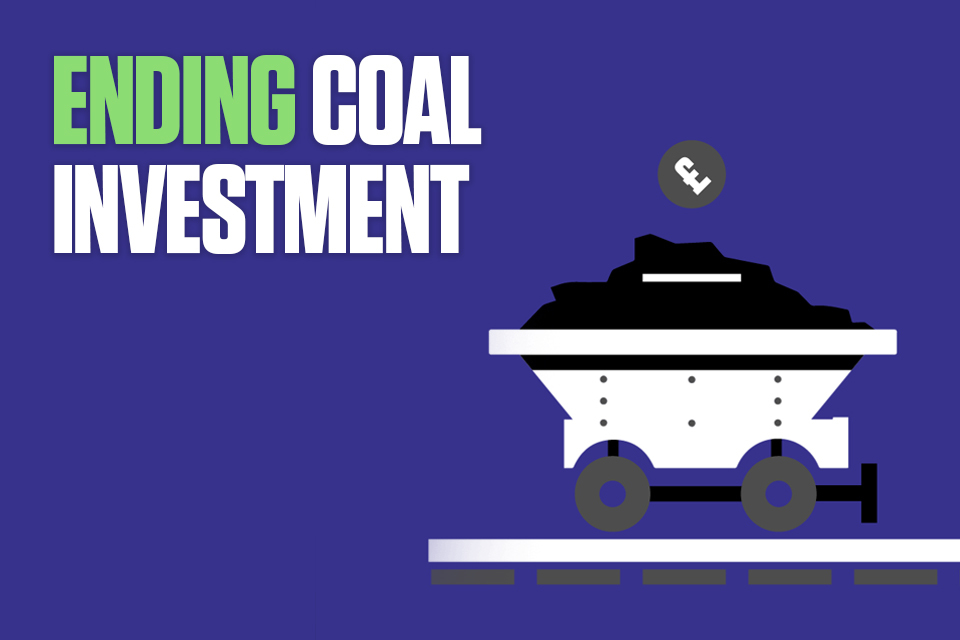A key outcome of COP26 was to begin the phase-out of coal. The world’s use of coal peaked around 2014. It is one of the biggest causes of greenhouse gas emissions, according to the International Energy Agency, and it is the biggest contributor to climate change. Coal emissions are set to rise above 2019 levels in 2021. In China, emissions continued to rise during 2020 and drove an increased use of coal.

Importance of Coal
This topic is so important because the power sector makes up a quarter of global greenhouse gas emissions. We need to move away from coal use at a pace that is five times faster than present if we are to meet the goals of the Paris Agreement. In 2015, the Paris climate aimed to limit global warming to 1.5C to 2C. Since then, there has been a 76% reduction in the amount of new coal plants planned. The statement issued at COP26 around use of coal noted that coal power generation is the main cause of increase in temperature and recognised that urgent action was necessary to deploy clean power. World leaders and countries committed to work together to make clean power more affordable and accessible. Their vision was to accelerate the phase-out of coal and its power generation in order to meet the goals under the Paris Agreement (and in light of SDG7).
What happened at COP26?
At COP26, countries agreed to accelerate the phase out of coal. Forty-six countries have agreed to phase out coal-fired power after 250 years. Coal is known as the “dirtiest” source of fuel. Canada, Poland, South Korea, Ukraine, Indonesia, and Vietnam are major coal-using countries who have agreed to phase out their coal use for electricity generation. Kwasi Kwarteng is the UK’s business secretary. He has said that “the end of coal is in sight.” He believes that we are making progress, despite the absence of China and the US on the pledges. He has also pointed out that China, being the world’s biggest polluter, had committed to net zero by 2060. There was a separate commitment in which twenty countries (including the US) pledged to end public financing for “unabated fossil fuel projects” that burn fossil fuels (like coal) abroad by the end of 2022. Unabated fossil fuel projects do not deploy technology to absorb carbon pollution they are producing. The investment in unabated fossil fuel projects has risks also as well as negative impacts on the government, employment, and public health, according to the signatories.
At COP26, the head of Greenpeace’s delegation, Juan Pablo Osornio, stated that some countries, such as Vietnam and Egypt, could not commit to the phase out of coal as their economies rely on the role out of coal. However, he warned that this was the critical period for cutting emissions. He stated that it was essential to end coal use by 2030 in countries such as Poland and Germany but all governments would need to commit to this plan in order to limit global warming to 1.5C. Those who have signed the agreement have committed to ending all investment in new coal power generation as well as agreeing to the phase out of coal power in the 2030s and 2040s. Many organisations also signed the pledge and major banks agreed to stop financing the coal industry.
Leo Roberts (climate think tank E3G) commented on how “the era of coal is coming to an end” while many countries are agreeing to the phase out. 19 countries vowed to end overseas fossil fuel finance by 2022. China, Japan, and South Korea are all major coal funders were not present at the pledge. Dozens of developing and developed countries committed to stop using coal. More than 100 institutions/organisations agreed to stop financing coal development. G20 nations agreed to stop financing unabated coal plants abroad.

What needs to happen next?
Scientists warn that the carbon emissions from fossil fuels could rise even further in 2022. Further rise in these emissions cannot be prevented if coal use is not decreased significantly. In order for the world to stay within 1.5C, experts find that developed countries should aim to phase out coal before 2030. South Africa, Indonesia and the Philippines did not pledge to phase out coal, however they did agree deals that can lead to early retirement of many existing coal-fired power plans. According to the COP26 website, countries can help by committing to the phase-out of coal by the year 2030 for developed countries and by 2040 for developing countries. Solar and wind power are now cheaper than coal in many countries. This provides more job opportunities and provides cleaner air. There has been a main focus for the UK of “consigning coal to history.” The aim is to limit global heating to 1.5C above the pre-industrial levels. The world is moving in the right direction with the phase out of coal.
Australia, China, India and the US are major coal-dependent economies, yet they were missing from the deal. The G20 ministers failed to agree on the phasing out of coal-fired power plants. Progress has been made in the global reduction of coal, however it still produced around 37% of the world’s electricity in 2019. Countries such as South Africa, Poland and India need major investments to achieve cleaner energy sectors. The aim is to work towards the acceleration of a global transition from coal to clean power. It is vital that clean power is shown to be the “most attractive option” for new power generation for all countries and to aid countries in shifting away from coal use. Political, financial and technical leaders of the global power sector in the Energy Transition Council are working to ensure this goal.
Conclusion
COP26 marks the first-time negotiators have discussed the shift away from coal use. The forty-six countries have made commitments to phase out domestic coal. A further twenty-nine countries agreed to end support for unabated fossil fuels by the end of 2022 and put this investment towards clean energy instead. The Glasgow Climate Pact includes the agreement to phase out the use of coal. India and China requested that there was a phase down of coal rather than a phase out. This is due to developing countries not being able to keep up with these demands. 28 new members signed up to the “powering past coal alliance” to urge this phase-out. While China has committed to halting investment in overseas coal mining and is looking to phase out coal, it is also the world’s biggest coal user – and biggest polluter. The US has many pledges to reduce natural gas and to reduce methane. According to the IEA, in order to reduce the impacts of climate change, investment in any new coal power plants has to be stopped from 2021. The planets aim is to reach net zero emissions by 2050. In order to do this, global electricity production must hit this target a decade earlier than originally planned. There needs to be a fair approach in the transition away from coal use.
References
COP26, P., 2021. Push to end coal use announced at COP26. [online] RTE.ie. Available at: <https://www.rte.ie/news/environment/2021/1104/1257749-cop-26/> [Accessed 6 December 2021].
BBC News. 2021. COP26: More than 40 countries pledge to quit coal. [online] Available at: <https://www.bbc.com/news/science-environment-59159018> [Accessed 6 December 2021].
UN Climate Change Conference (COP26) at the SEC – Glasgow 2021. 2021. Energy – UN Climate Change Conference (COP26) at the SEC – Glasgow 2021. [online] Available at: <https://ukcop26.org/energy/> [Accessed 6 December 2021].
UN Climate Change Conference (COP26) at the SEC – Glasgow 2021. 2021. Global Coal to Clean Power Transition Statement – UN Climate Change Conference (COP26) at the SEC – Glasgow 2021. [online] Available at: <https://ukcop26.org/global-coal-to-clean-power-transition-statement/> [Accessed 6 December 2021].
Harvey, F., Ambrose, J. and Greenfield, P., 2021. More than 40 countries agree to phase out coal-fired power. [online] the Guardian. Available at: <https://www.theguardian.com/environment/2021/nov/03/more-than-40-countries-agree-to-phase-out-coal-fired-power> [Accessed 6 December 2021].
International Energy Forum. 2021. Key Challenges Facing COP26. [online] Available at: <https://www.ief.org/news/the-promise-and-challenges-of-cop26> [Accessed 5 December 2021].
Mountford, H., Waskow, D., Gonzalez, L., Gajjar, C., Cogswell, N., Holt, M., Fransen, T., Bergen, M. and Gerholdt, R., 2021. COP26: Key Outcomes From the UN Climate Talks in Glasgow. [online] World Resources Institute. Available at: <https://www.wri.org/insights/cop26-key-outcomes-un-climate-talks-glasgow> [Accessed 6 December 2021].
Warrilow, D., 2021. Conclusion from COP26. [online] RMetS. Available at: <https://www.rmets.org/metmatters/conclusion-cop26> [Accessed 5 December 2021].